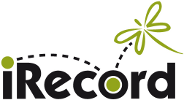Key features
The goal of iRecord is to help bring together wildlife sightings from many sources, so that they can be checked by experts and made available to support research and decision-making. It is operated by the Biological Records Centre (BRC) as part of the work of the UK Centre for Ecology & Hydrology (UKCEH).
- Record all the wildlife you see
- Securely store and keep track of your records
- Benefit from automatic data checks and review by experts
- Share your sightings with the recording community
- Explore dynamic maps, reports and graphs of your data
- Explore data shared by other recorders in your area and/or for species groups you are interested in
- Contribute to science and conservation
See the iRecord user guide for a full details of how to use iRecord. Records can also be added to iRecord via the iRecord app.
Use of iRecord is subject to our Terms of use, and data is stored in accordance with our Privacy Notice.
Overview
iRecord is a website for sharing wildlife observations (biological records), including associated photos – you can register quickly and for free. Once registered, you can add your own records for others to see, and you can see what has been recorded by others. Your data will be kept secure and will be regularly backed up.
Automatic checks will be applied to your observations to help spot potential errors, and experts can review your sightings. All wildlife sightings are shared with other users and made available to National Recording Schemes (and their county recorders where relevant), and to Local Environmental Records Centres. Most records are also shared more widely via the NBN Atlas, and with a range of bona fide organisations for research and conservation.
Technical framework
iRecord has been developed using Indicia, an open-source and free toolkit for making it relatively easy to build websites for biological recording. A key component of Indicia is a data warehouse that is a spatially-enabled, relational database to provide secure, standardised, rapid data input and reporting facilities. iRecord data, and data from many other Indicia implementations, is held within an Indicia warehouse hosted at UKCEH on behalf of the recording community.
Future developments
We are committed to maintaining and developing this website. We welcome feedback on your experiences from using the site, and suggestions for further improvements.
Bringing records together
A very large number of records is added directly to iRecord every year, and iRecord also incorporates observations from other Indicia websites and smartphone applications developed by partner organisations. The partner websites/apps may look very different to iRecord, and may capture records in ways that are specific to particular survey methods.
Because each uses the same underlying structure within the iRecord data warehouse, records from all these different sources can be integrated and summarised across species groups and geographic areas. This measn that verifiers can access records from many sources in one place, and data can be shared more efficiently, according to the needs of the partners involved.
Many different websites and apps link to the iRecord data warehouse; here are some examples of the larger projects that do so:
- UK Butterfly Monitoring Scheme
- NatureSpot
- Capturing Our Coast
- SEWBReCord
- National Plant Monitoring Scheme
- CEDaR Online Recording
- Mammal Society
- Wild Sheffield - Nature Counts
- Yorkshire Naturalists' Union
- Suffolk Biodiversity Information Service
- LERC Wales app
Data accessibility
iRecord data are stored in a secure database, are archived daily and are open to view by anyone via the website. Records entered into the iRecord website are also made available to relevant individuals and organisation(s), including National Recording Schemes and Societies and their County Recorders, Local Environmental Records Centres, at full capture resolution to enable verification and sharing via the NBN Atlas (with some exceptions for sensitive species).
Who are we?
iRecord is operated by the Biological Records Centre (BRC) as part of the work of the UK Centre for Ecology & Hydrology (UKCEH). BRC is supported by the Joint Nature Conservation Committee (JNCC) and UKCEH (through National Capability funding via Natural Environment Research Council (NERC)).
iRecord and the Indicia software is developed and maintained by the BRC and Biodiverse IT. iRecord also benefits greatly from a number of expert volunteers affiliated to National Recording Schemes and Societies and with links to Local Environmental Records Centres.
iRecord can be contacted via irecord@ceh.ac.uk
